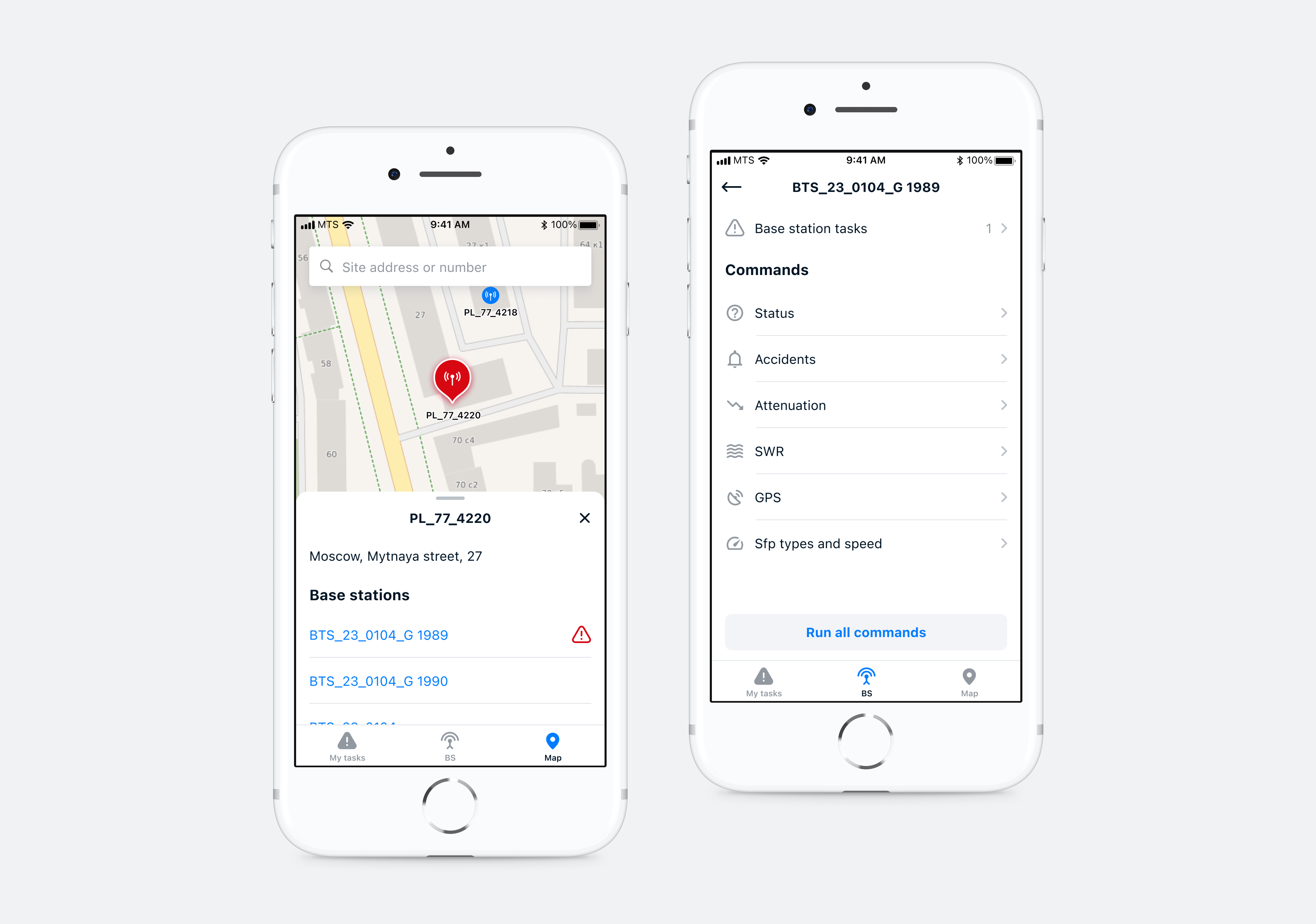MTS (Mobile TeleSystems) is the largest mobile network operator in Russia.
The F1 app helps engineers repair equipment at cellular base stations. A base station is equipment for receiving and transmitting radio signals from one subscriber to another. The application shows the engineer’s tasks, helps to quickly find out the necessary parameters of the technical condition of the equipment and close the work.
The process of repairing the base station was very complex, time consuming, and involved two or more people
The engineer would get a text message about a new job with the site and base station number
would type the address into online maps
he would need to know the parameters of the station at the site, so he could figure out what to fix
he called the second engineer, who queried the parameters from the system, waited for them to load, and then dictated the data to the first engineer
the first engineer fixed the station, and then called the office again to see what his actions had done to the equipment
these steps could be repeated several times
when the engineer fixed the equipment, he needed to close the task in the system
he called again or went back to the office himself to close the task
Optimize repair process of the station:
automate receiving of parameters
remove second person from process
reduce time to close the task
The engineer receives a push notification of a new task. The application shows all user tasks: incidents (urgent serious accidents) and emergency repair work (planned work and non-serious equipment breakdowns). The task card has all the necessary information: the site number and address where the equipment is located, the time of closure, and the base station to be repaired.

From the task card, you can click on the site number to go to the map and see its location. There are usually several base stations at a site. The base station with the incident is marked by an icon. When you click on the desired base station, all the available station parameters appear and can be queried.

In order not to burden the system and get a quicker response, you can request only one parameter you want. The history of queries is stored so that the engineer can compare values and understand the effect of his actions on the station. A value that exceeds the norm is highlighted in orange, but this is not possible for all parameters. If the values in the new query are different from the previous query, the old values are indicated next to the new values in brackets to make it easier for the engineer to compare them.

You can see objects on the map by address, find your location and nearest sites. Sites with incidents are marked in red, those with emergency repair work are marked in orange.

When the work is completed, the engineer closes the task in the application. He can change the cause if the repair turned out to be a different cause. Records what he did. The time is put in automatically, but it can be changed.

Only 1000 test installations of the application reduced the number of calls to the office by 20%.
The app won 1st place in an internal process automation product competition.
I’ve learned how to do end-to-end design. I was the only designer on the team for the first time and designed the entire app by myself: did user research, collected user stories, communicated with a stakeholder, created look and feel, collaborated with engineers.